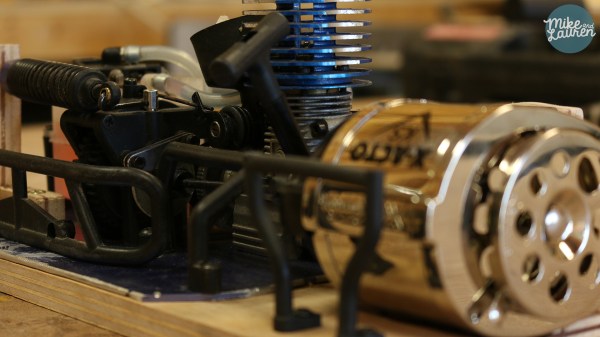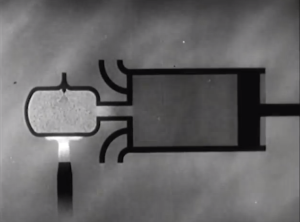Whether you’re into fruit smoothies or icy blended cocktails, a blender comes in handy when preparing these beverages in the kitchen. But, if a small electric motor can do the job well, a noisy combustion engine can certainly do it louder. This is demonstrated ably by this project from [JT Makes It].
The build is a steel-framed contraption, mounting a small gas engine of the type you’d typically find in a weed trimmer or other garden tool. It’s attached to a shaft allowing it to spin a blender blade at up to 41,000 rpm when unloaded. A stout metal container is mounted on top, along with a plexiglass lid to ensure the contents of the bowl don’t escape when the blender is in action.
It’s a fun build, and one that has no trouble turning a bucket of apples into mush in under 60 seconds. More realistically, [JT] is able to whip up several litres of blended cocktail without major effort, which would be great for parties. Though, we do imagine the burning oil and gas fumes does somewhat spoil the taste sensation. We’ve seen similar hacks before, like this nitro-fuelled pencil sharpener. Video after the break.






 By 1877, [Nikolaus Otto] had completed work on his coal gas engine built on four-stroke theory. This was the first really useful internal combustion engine and the precursor of modern four-stroke engines. It was eventually adapted for transportation with gasoline fuel. In 1890, the hot bulb oil engine was developed under the name Hornsby-Akroyd and primarily used in stationary power plants. Their flywheels had to be started manually, but once the engine was going, the bulb that drove combustion required no further heating.
By 1877, [Nikolaus Otto] had completed work on his coal gas engine built on four-stroke theory. This was the first really useful internal combustion engine and the precursor of modern four-stroke engines. It was eventually adapted for transportation with gasoline fuel. In 1890, the hot bulb oil engine was developed under the name Hornsby-Akroyd and primarily used in stationary power plants. Their flywheels had to be started manually, but once the engine was going, the bulb that drove combustion required no further heating.








